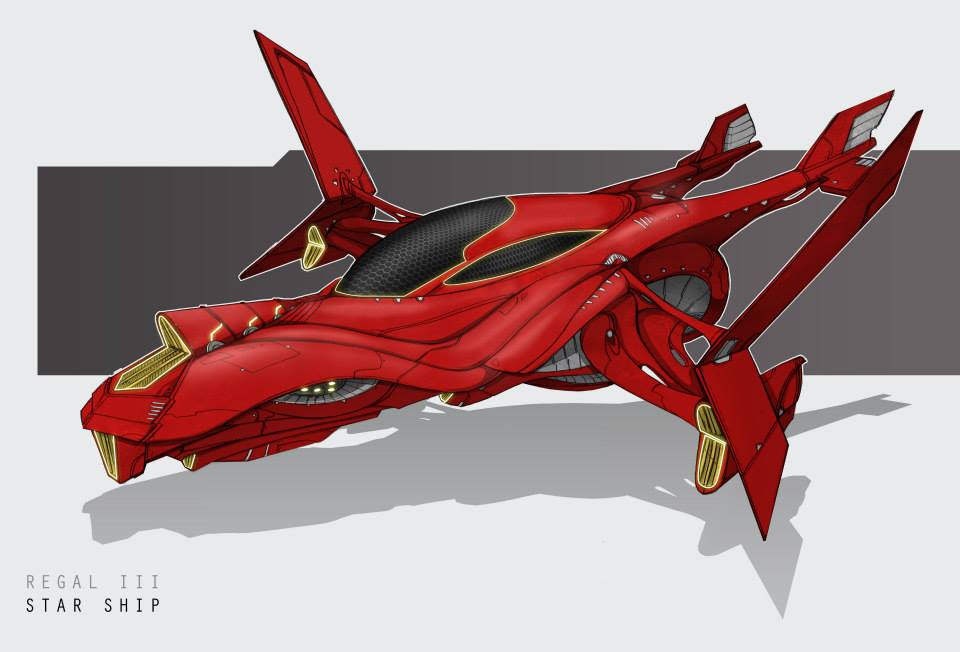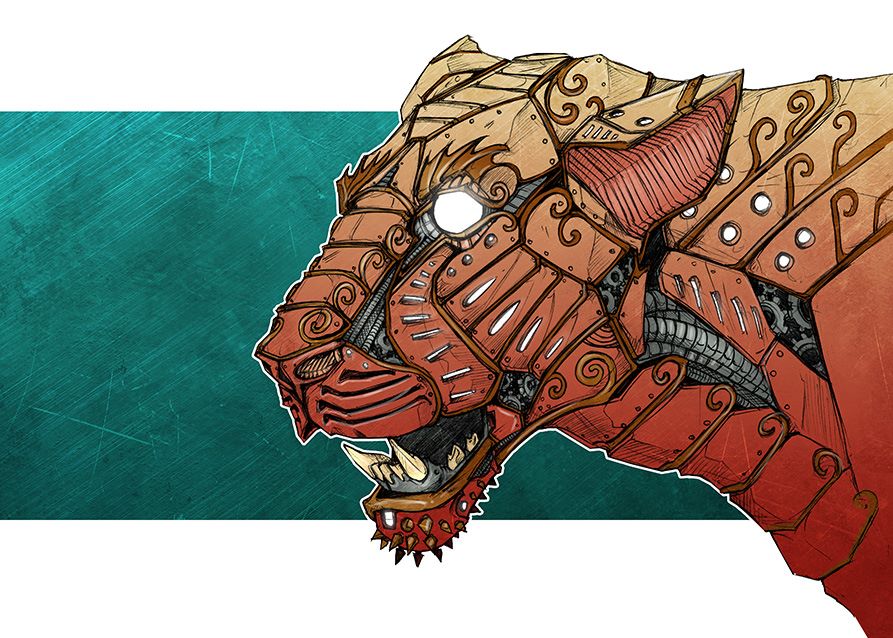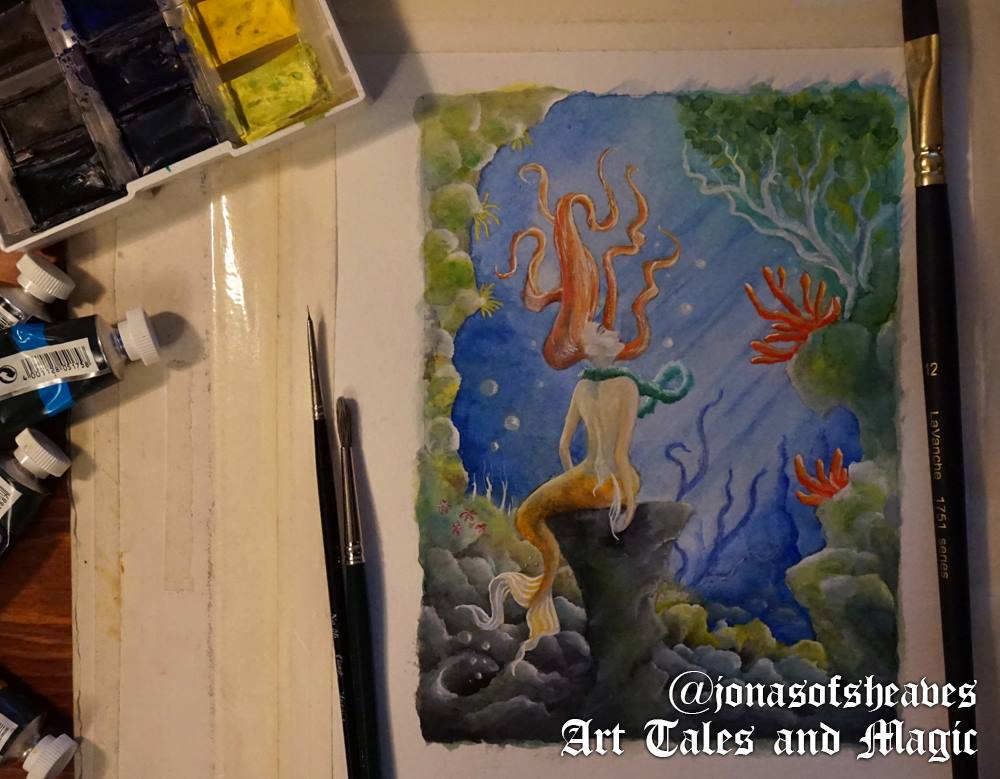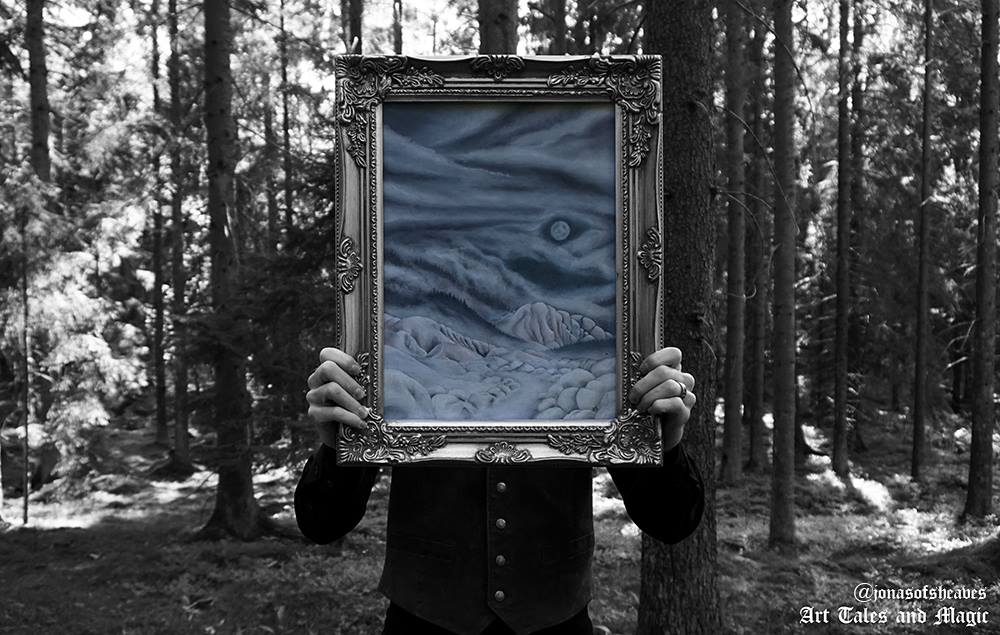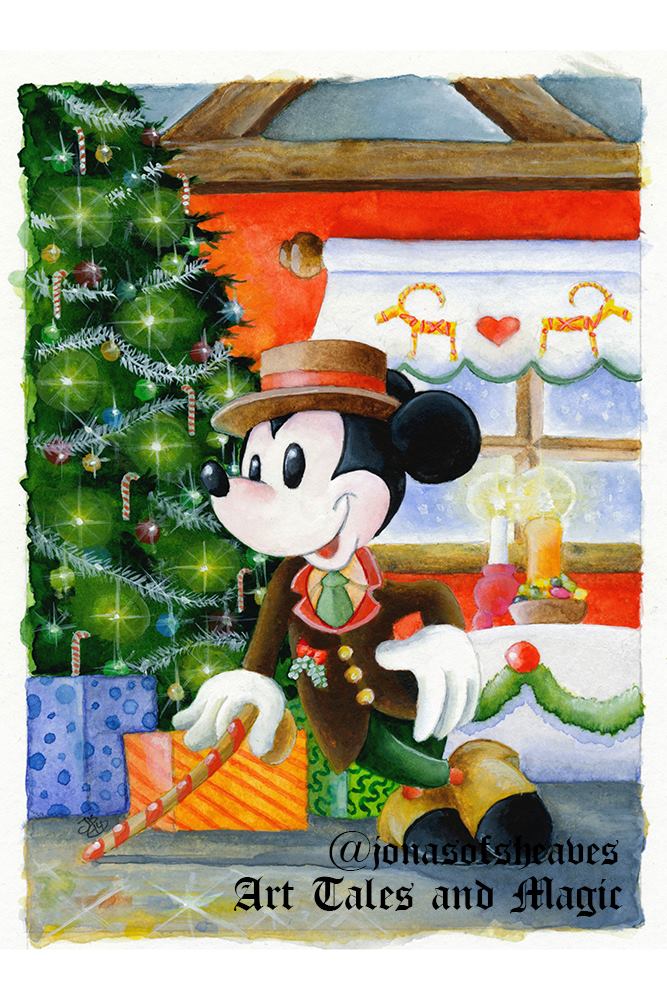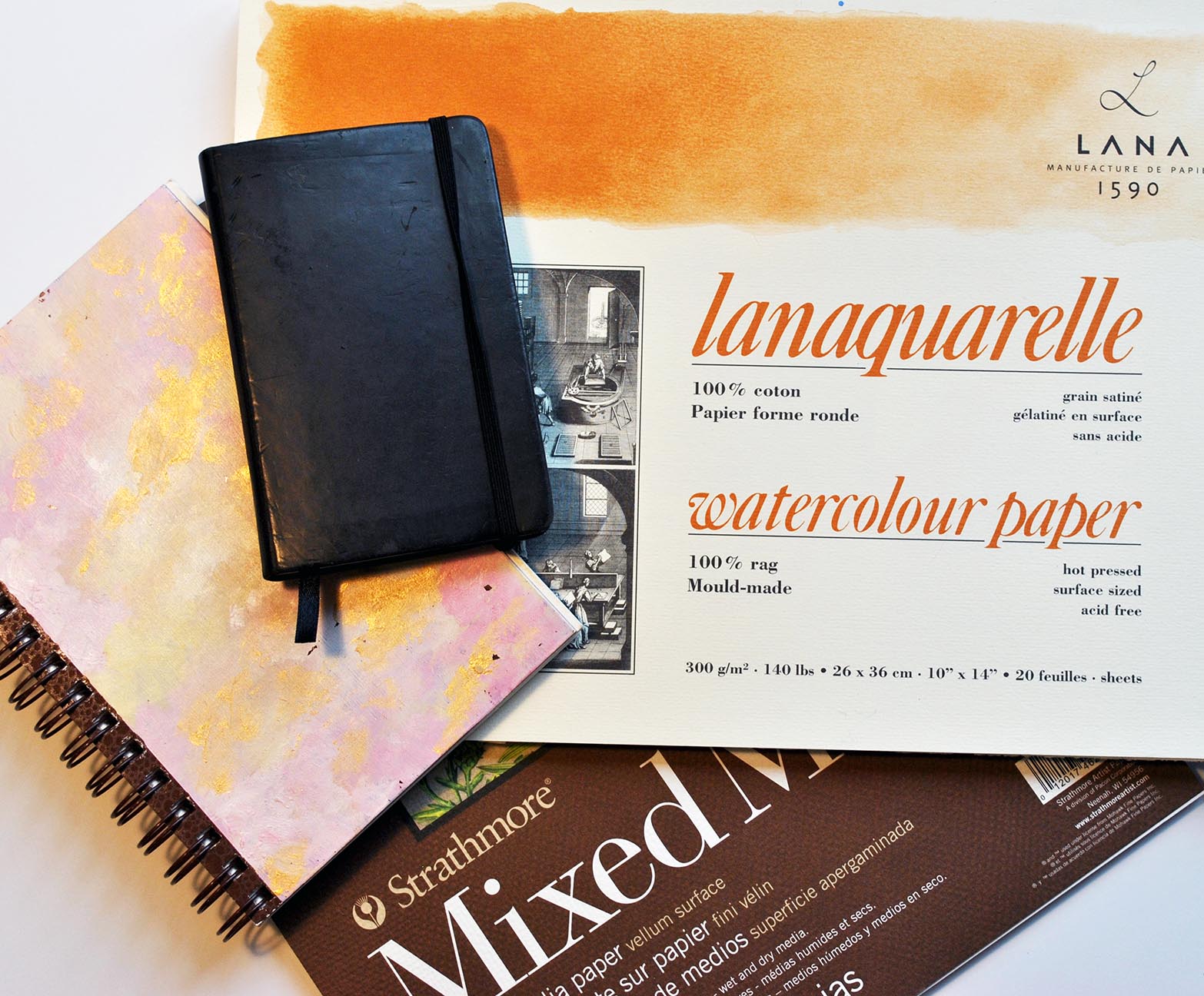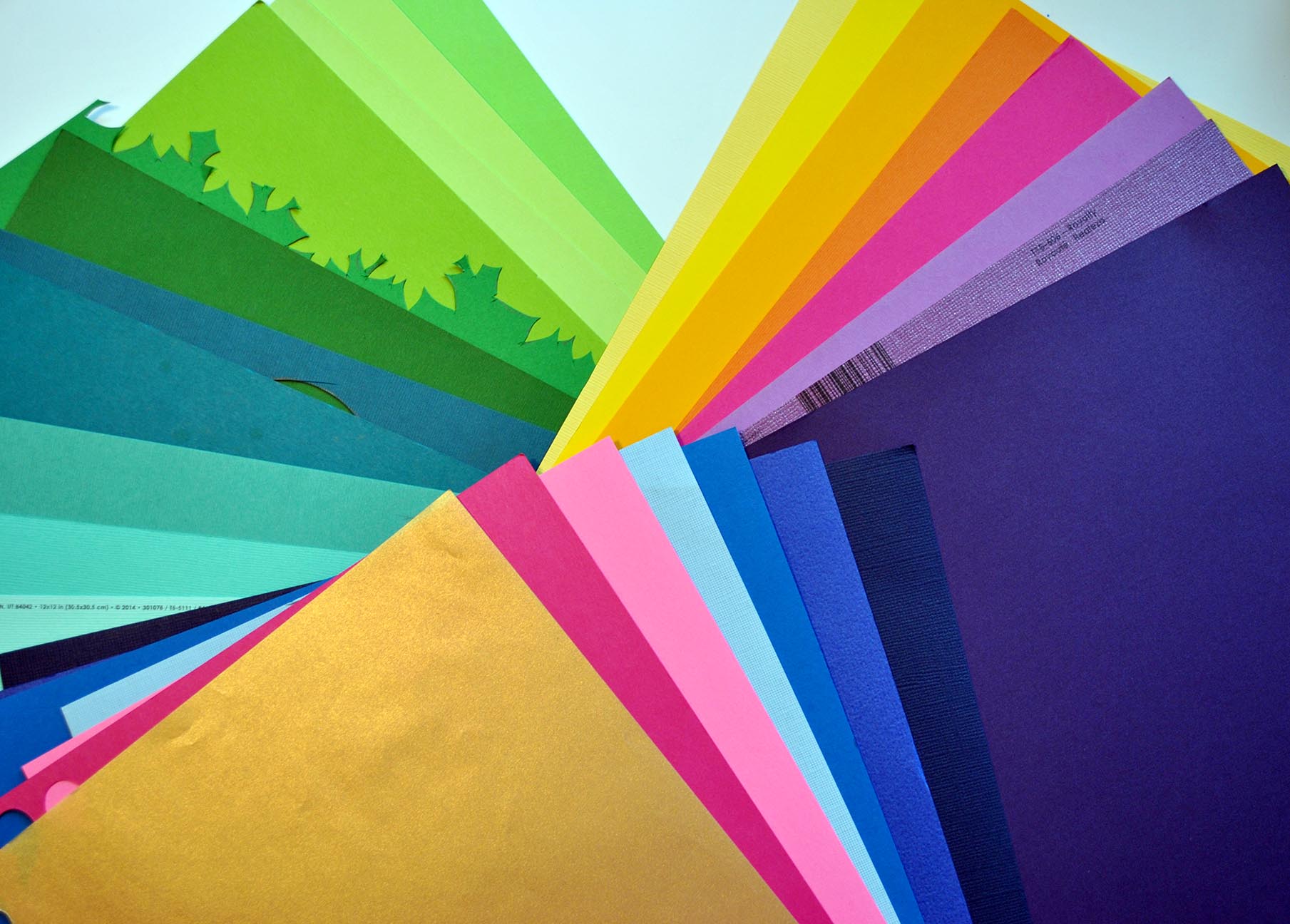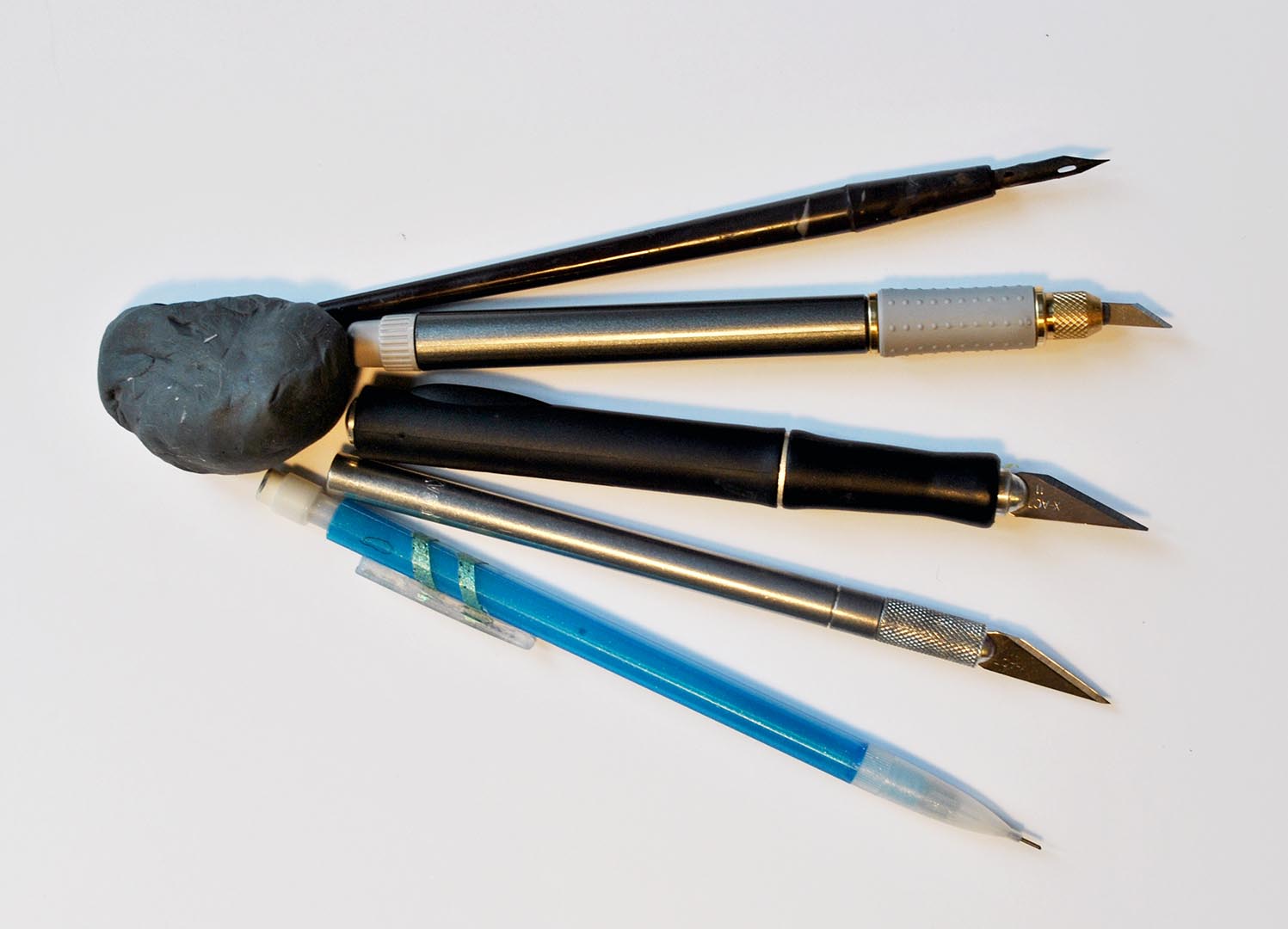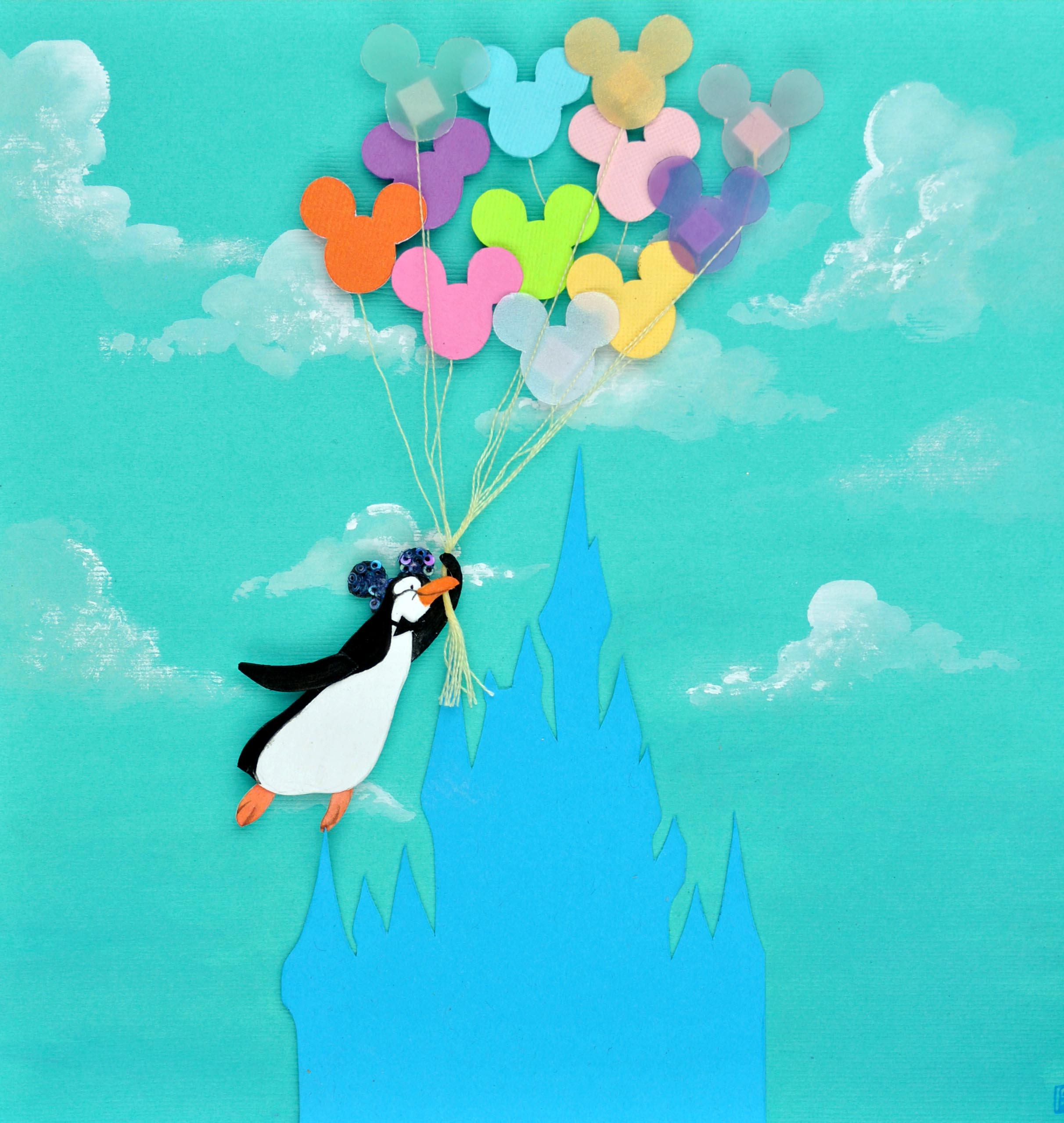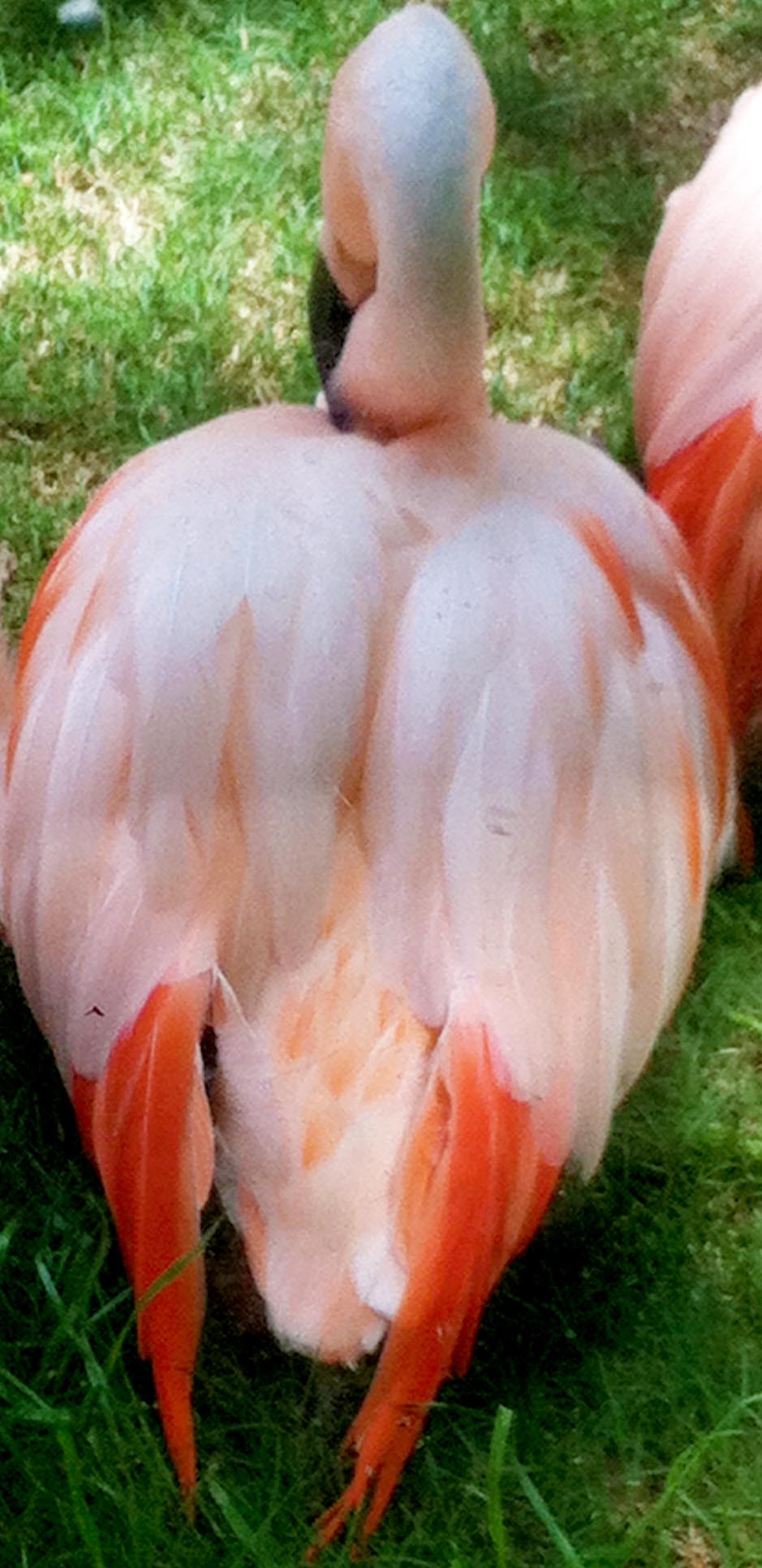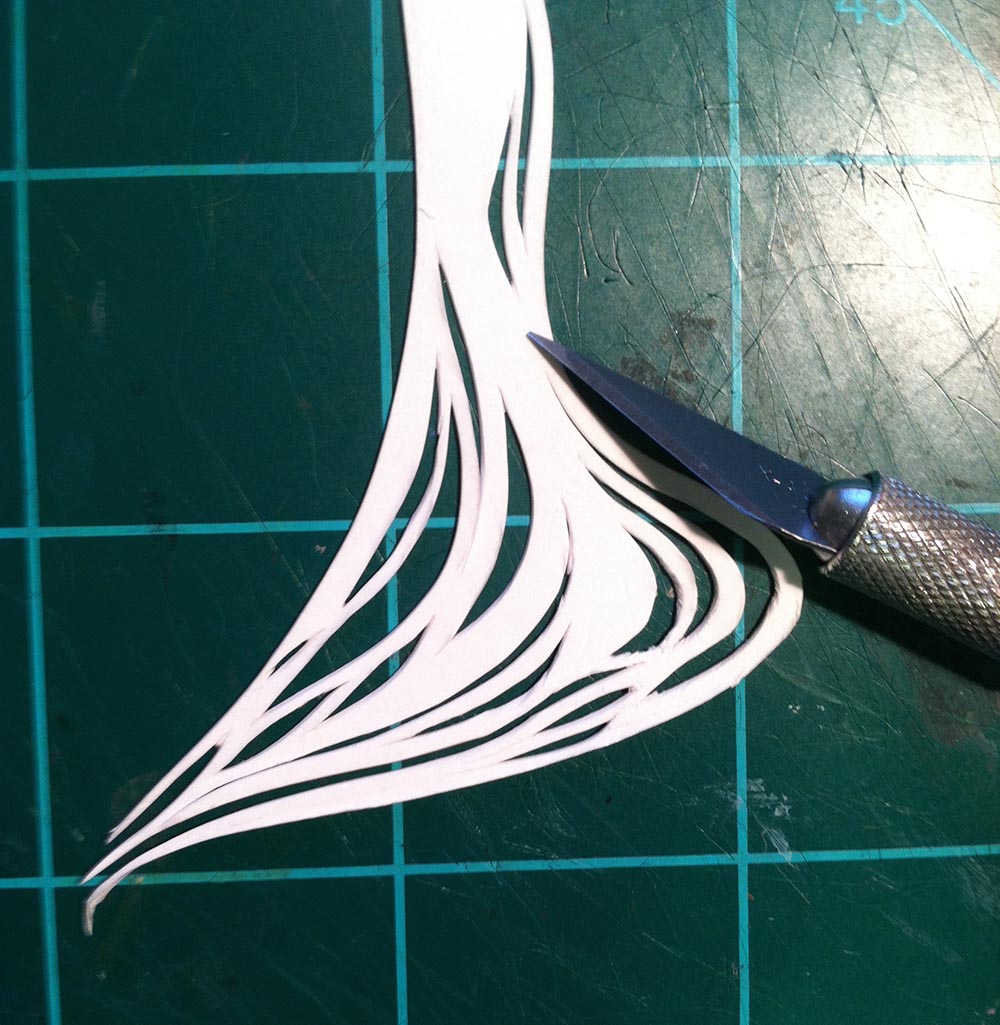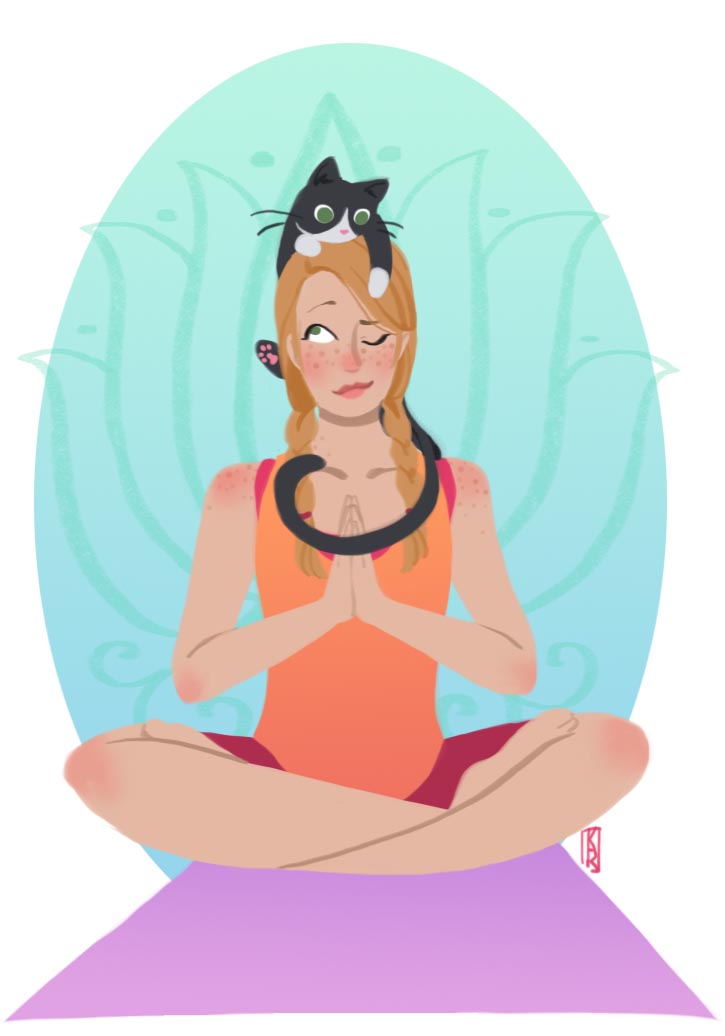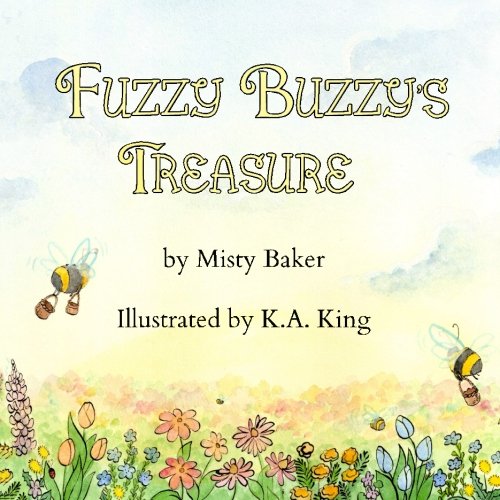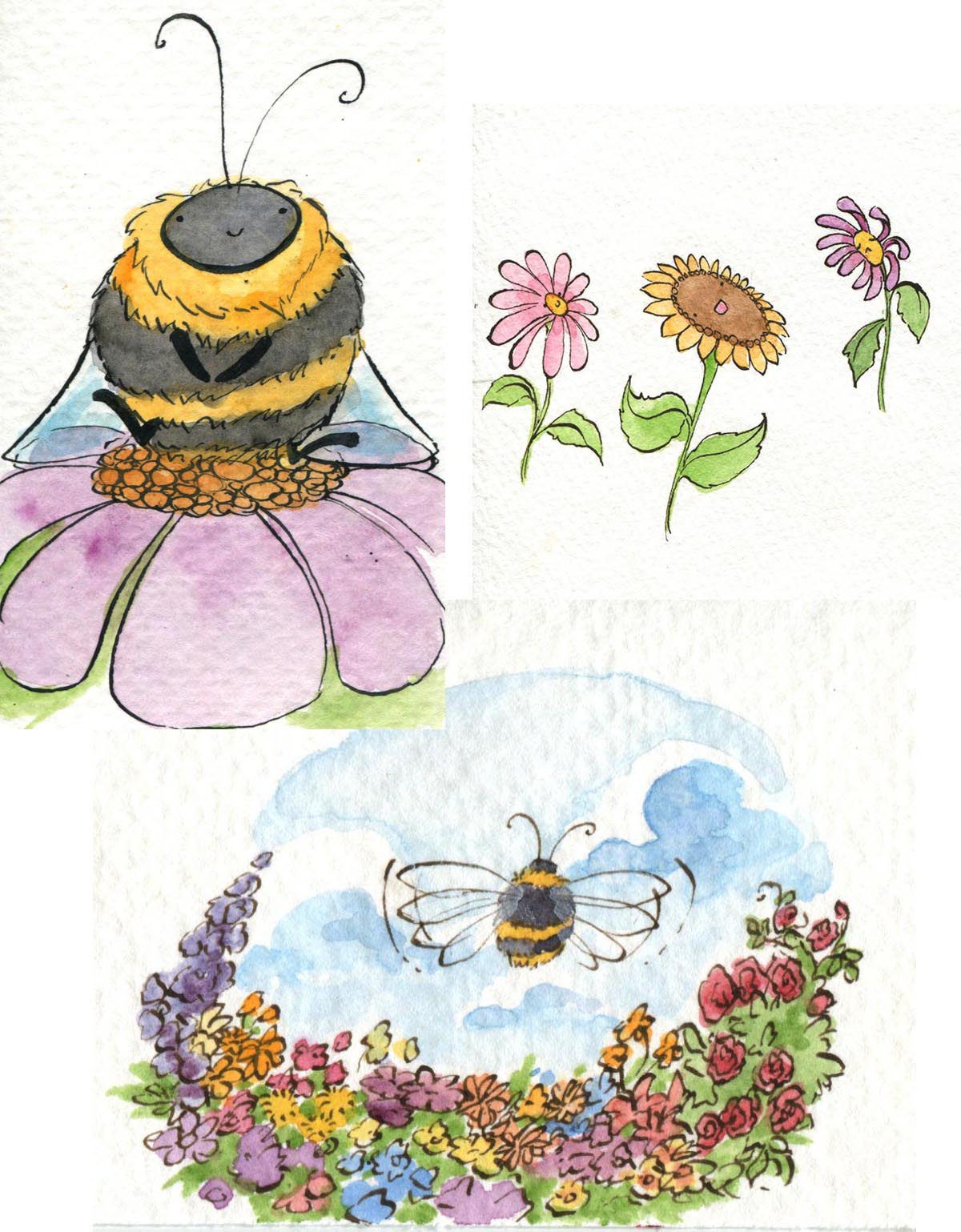Artist Interview: Nick Fair
To make up for my lack of blog posts recently, you get 3 this week!
Recently I had the pleasure of interviewing multi-talented artist and graphic designer Nick Fair. He shared with me some of his insights on creativity and finding inspiration all around.
1. What/who do you find to be your biggest source of inspiration?
Inspiration is a funny thing- it takes many forms. As a kid, I took a huge amount of inspiration from the artist R.K. Post and his twisted creatures and goth stylings, as well as illustrator/designer Syd Mead and his futuristic environments. However I’m equally inspired by utterly erroneous things, like the way a speaker is shaped in an office I’m sitting i, or the pattern on a butterfly I snap a photo of on the way to lunch. Where individual artists have shaped my overall aesthetic, random happenstances shape individual pieces.
2. What's your favorite medium to work in?
In college, my professor called me a ‘paper tiger’, because all I wanted to do was sketch. I’ve been drawing in pencil and inking with fine-point pens for a long time, and my favorite paper to use is bristol because I have a habit of engraving the paper, much to the detriment of my tools. I use a cintiq tablet for digital work and for my coloring process, but it’s slow runnings transitioning from pen to digital when it lacks the subtle feedback of a physical medium.
3. Any new mediums you're itching to try?
I’ve been trying to get more into watercolor and acrylic, or just painting in general- I guess you could say I’m itching to succeed with those mediums. At some point I really want to try oil painting, but it’s a little cost prohibitive to just pick up without real direction. I’ll get it eventually.
4. What would your dream project be?
Dream project for the long-term? Be a creative lead on something with world building and a high CGI budget- probably a movie or video game. The idea of creating an immersive world is too tantalizing- like the movie Avatar, but even cooler. Dream one-man project? Probably producing a full comic series.
5. Describe your studio/workspace. What would you change, given the resources?
Funnily enough, I’m currently in the process of transitioning where I live, so my new studio will be a bit different than my last one, but as it doesn’t exist… I’ll describe my last one. I had a dual-monitor set-up on an L-desk with my Cintiq and another HD screen, and a drafting table to the right. The wall was covered with all of my tools- tape, S-curves, rulers, scissors, etc, and then I had a series of drawers underneath just bursting with Prismacolor markers, pencils, pens, and paint tubes, with bookshelves of design and art books on the back wall (along with more than a few comics). Unlike that studio, which had to double as a living room, my new studio will literally be entirely devoted to being just that- whiteboards on the walls as well as some big windows, because I find that natural light is key in really getting the right brain engaged in a project. If I had the money, I would probably expand into 3D printing, and maybe get a kiln and a nice easel, honestly.
6. Do you like to warm up before drawing? If so, what fun exercises do you work on to get in the zone? (ex. Noun generator, word games, etc.)
I never actually ‘warm up’ in the classic sense that a lot of artists I know do. In general I plunge head-first into any project right where I left off, leaving some days where I sort of frustratedly doodle nothing of value, and others where I come out of the gate swinging (to mix my sports metaphors). That being said, getting in ‘the zone’ is all about the right space. I usually light incense, then put on talk radio, podcasts, or ambient music in the background to keep my brain from getting too hyper focused but not distracting enough to detract from my work. I’ll often browse the web or look through books for 10-15 minutes before starting a session, though, to get my mind in a place of visual appreciation and attuned to the style and look I’m going for.
7. What do you find to be the most difficult part of being a professional artist?
Interesting question- there’s lots of places to falter as an artist, and there's’ lots of ways to falter as a professional anything, and they’re usually unrelated. Lots and lots of utterly amazing artists out there that I know have little to no actual business sense, and it’s not enough to just be good, or even great at what you do. You need to get your name out there, and get your work in front of people and be fearless about it. It’s like a political campaign, but you’re just running PR for yourself, and if you’re working on being the best artist you can, it’s hard to make time for it. But it’s so, so necessary and important, or your work will sit on your unviewed portfolio site or in your studio for all eternity. Being a professional artist means accepting the ‘professional’ part is just as important as the ‘artist’ part.
8. What's your favorite thing to draw/paint/create?
My favorite thing and the easiest thing for me are quite different. I enjoy being able to make a quick piece that stands on its own- so wiley, weird creatures or robots are where I’m at if I want to ‘succeed’ easily. But my favorite thing to draw is really just something unlike anything else I’ve drawn before. It goes against the usual mantra of ‘repeat, repeat, repeat’ when it comes to mastering an art style, but I adore plunging into and succeeding at creating something that’s still mine but different than anything else I’ve ever made. It makes life difficult, sometimes.
9. How do you prevent/combat artist's block? Do you have tried-and-true methods of nurturing your creativity?
There’s no way I know to prevent the onset of artist’s block (and believe me, I wrote a thesis on it), but combating it once it’s started, and finding ways to trigger a creative mindset in what I (and the world of psychology) call ‘flow’, is totally possible. The key is knowing the levels at which your mind functions- there’s the part of you that is entirely mechanical, in a sense, where you know how to put pen to paper. Then, in contrast, there’s the parts of your brain that want, either to create something or evoke something, or utilize the eros energy you have to a specific end. And when you have one of these and not the other, it leads to the block- wanting to make but being unable. Everyone gets it, and it’s rooted in a lot of factors. Conversely, if you utilize mechanical action without direction, you get aimless doodling, which can sometimes be fun, but usually doesn’t result in something profound. I tend to take a step back if I’m ever blocked and I force myself to do something else, in a different environment, that will wake up the part of my brain that I need- controlling external stimuli. Social activity tends to give me the drive I need to utilize my mechanical action, and doing something physical, like exercise, usually puts me back in-synch with my hands and lets me get back to drawing properly. Of course, it’s different for everyone- but always notice when you have those moments of perfect mind and body harmony to create a piece, and then try and recreate those conditions when you don’t.
10. Just for fun: Dragons or unicorns?
Dragons, because Reign of Fire was the best worst movie when I was young.
11. Best advice you have for emerging artists?
The classic advice is ‘never stop drawing’, so I won’t tell you that, because everyone already has. Instead, I’ll just say that you should never throw out any of your art. I can’t tell you how many badly rendered great ideas I had as a kid that I’ve used in my modern pieces, and how many pictures that I thought were garbage and I left half-finished a month ago ended up in my portfolio when I looked back and finished them later.
You can visit Nick's profession websites at:
http://www.nickfairdesign.com
http://www.inklingart.net/
or visit his collective studio, Marshmallow Dumpling Studios on Facebook.
You can also keep up with Nick via these social media sites:
LinkedIn: Nicholas Fair
Pinterest: nickfairdesign
Twitter: NickFairDesign



